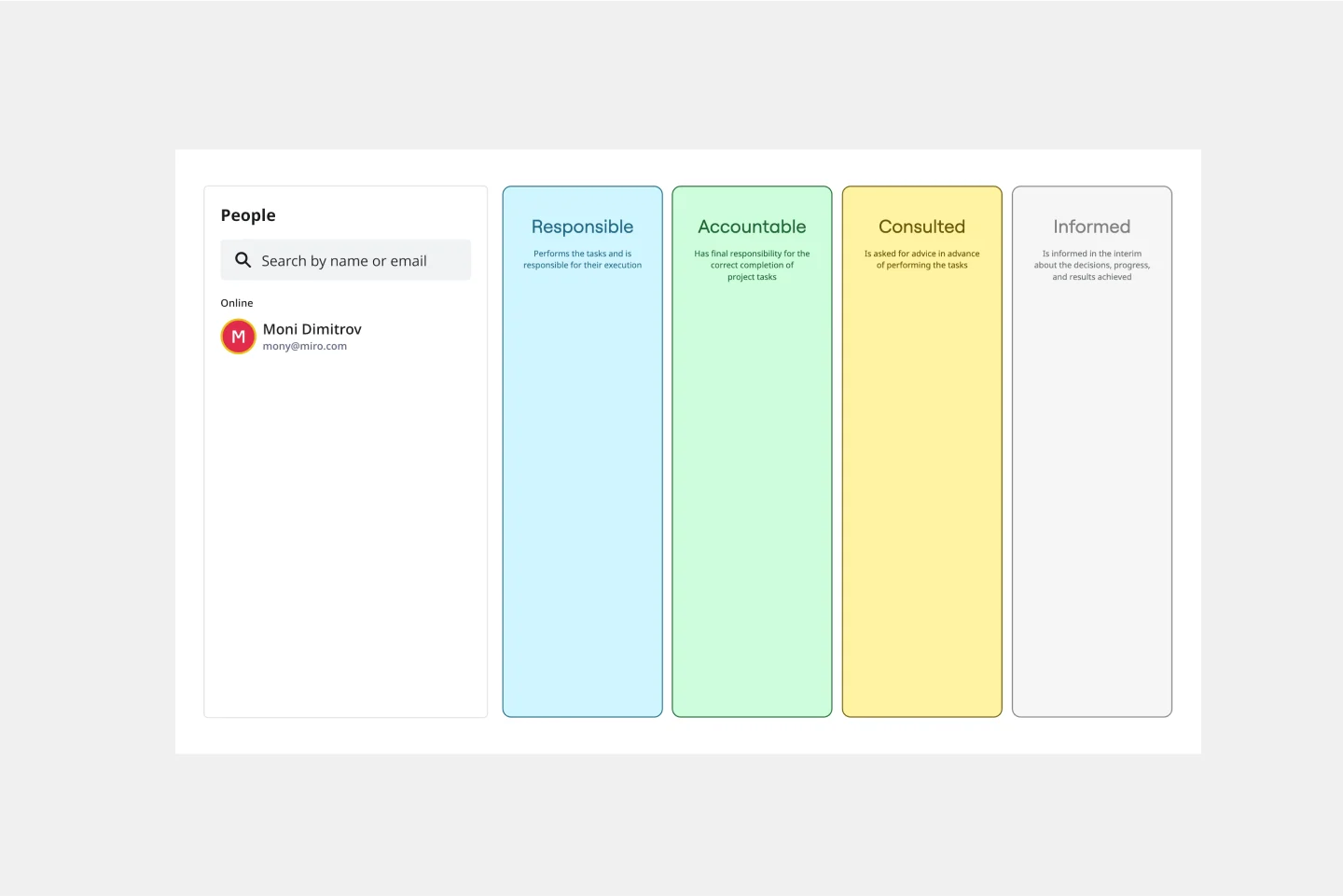Back to Strategy & planning
Stakeholder map templates
Navigate relationships and priorities with ease using our stakeholder map templates. Equip your team with the tools to identify, analyze, and engage stakeholders effectively, ensuring alignment and collaboration throughout your projects.
41 templates
Stakeholder RACI Map
510 likes
3.4K uses

Stakeholder Map
367 likes
3K uses

Stakeholder Map
120 likes
982 uses

Stakeholder Canvas
46 likes
490 uses

Climate Adaptation Stakeholder Map
38 likes
368 uses

Stakeholders Alignment Session
60 likes
279 uses

Stakeholder Map
36 likes
243 uses

Stakeholder Engagement Plan
42 likes
218 uses

Stakeholder Mapping
35 likes
210 uses

Future Wheel Example (With Stakeholders)
26 likes
168 uses

Business Organizational Chart Template
4 likes
143 uses

RACI Matrix Template
0 likes
142 uses

Explore more
Action PlanBusiness PlanBusiness PlanCalendarChange ManagementCompetitive AnalysisCost Benefit Analysis templatesDaily schedule templatesDecision MakingDecision MatrixGap AnalysisGoal Setting TemplatesMarket analysis templatesMarketing PlanMarketing StrategyOKR templatesWeekly PlannerPlanningPriority Matrix TemplatesProblem StatementProduct Roadmap Templates Product Strategy TemplatesProject CharterProject Tracking Project Tracking Requirements GatheringResource PlanningRisk AssessmentRoadmapSmart GoalsSocial Media PlanningTimelineTo Do List Vertical TimelinesWhiteboard
